

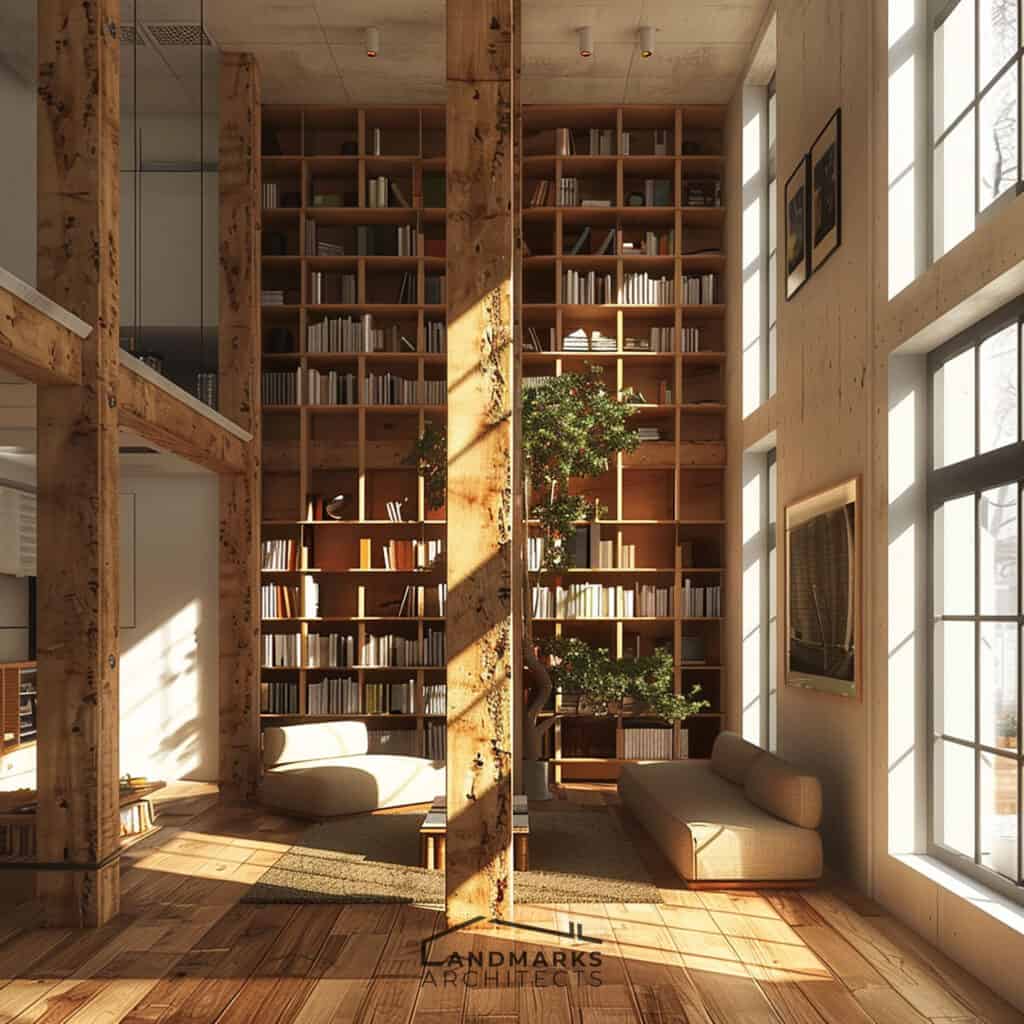
Welcome to our exploration of architectural columns in interior design. Load-bearing columns, often overlooked but essential elements in interior design, play a dual role, blending functionality with aesthetics.
In this article, we will explore the domain of interior design, where interior columns transcend their structural significance, imprinting an indelible mark on the ambiance and style of a space. This piece peels back the layers, shedding light on the often-unseen aspects of interior columns. Join us as we investigate their multifaceted world, unraveling the significance they hold in crafting unique and visually alluring interiors.
1. Structural Integration

Interior columns, when strategically placed, serve as stalwart support structures. In innovative design, columns can conceal structural elements, providing a seamless blend of form and function.
Decorative interior columns can disguise load-bearing features, allowing for open, airy spaces without compromising on safety or aesthetics.
2. Space Definition
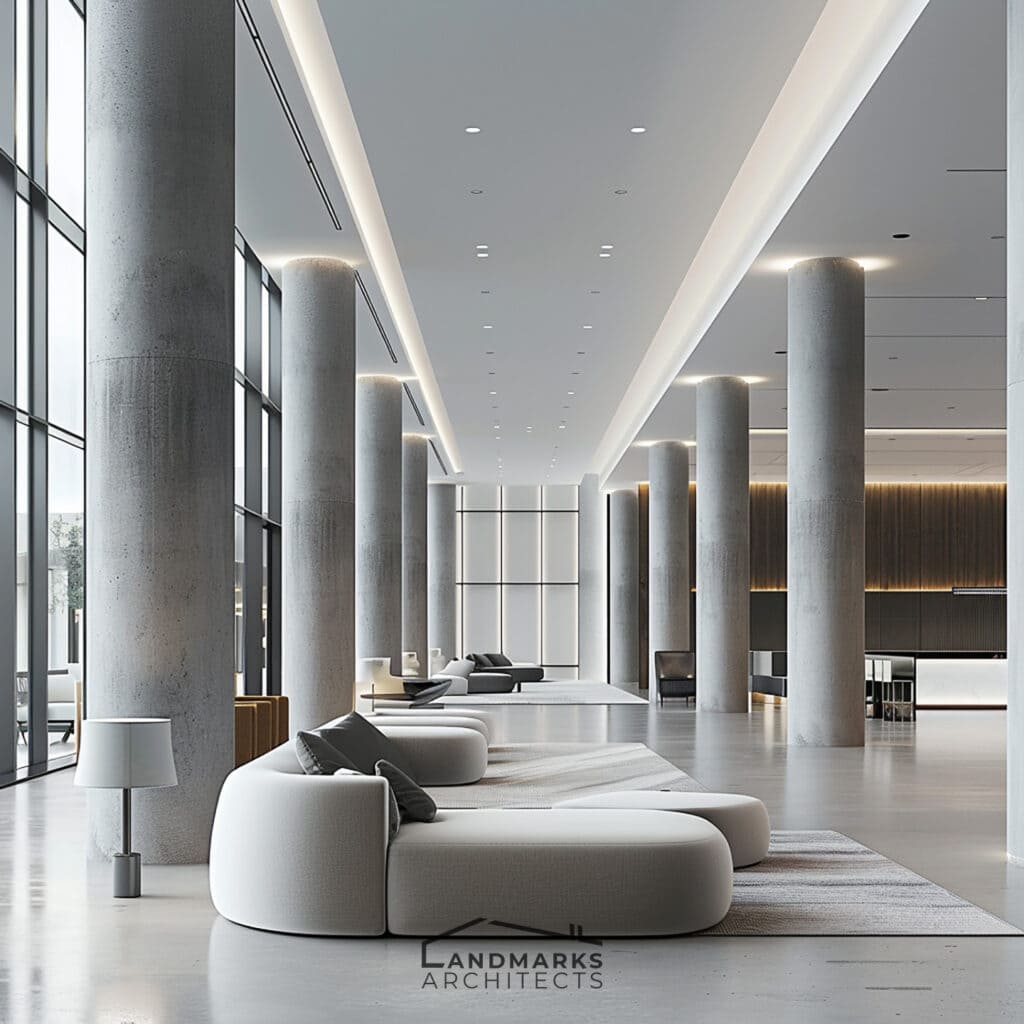
In open plans, interior columns are invaluable for defining spaces. Positioned strategically, these columns act as subtle dividers, creating zones within a larger area while maintaining an open feel. In living spaces and dining areas, columns play a pivotal role in establishing boundaries without compromising overall design fluidity. For instance, a well-placed column can elegantly separate the dining room and living area, enhancing both functionality and aesthetic harmony.
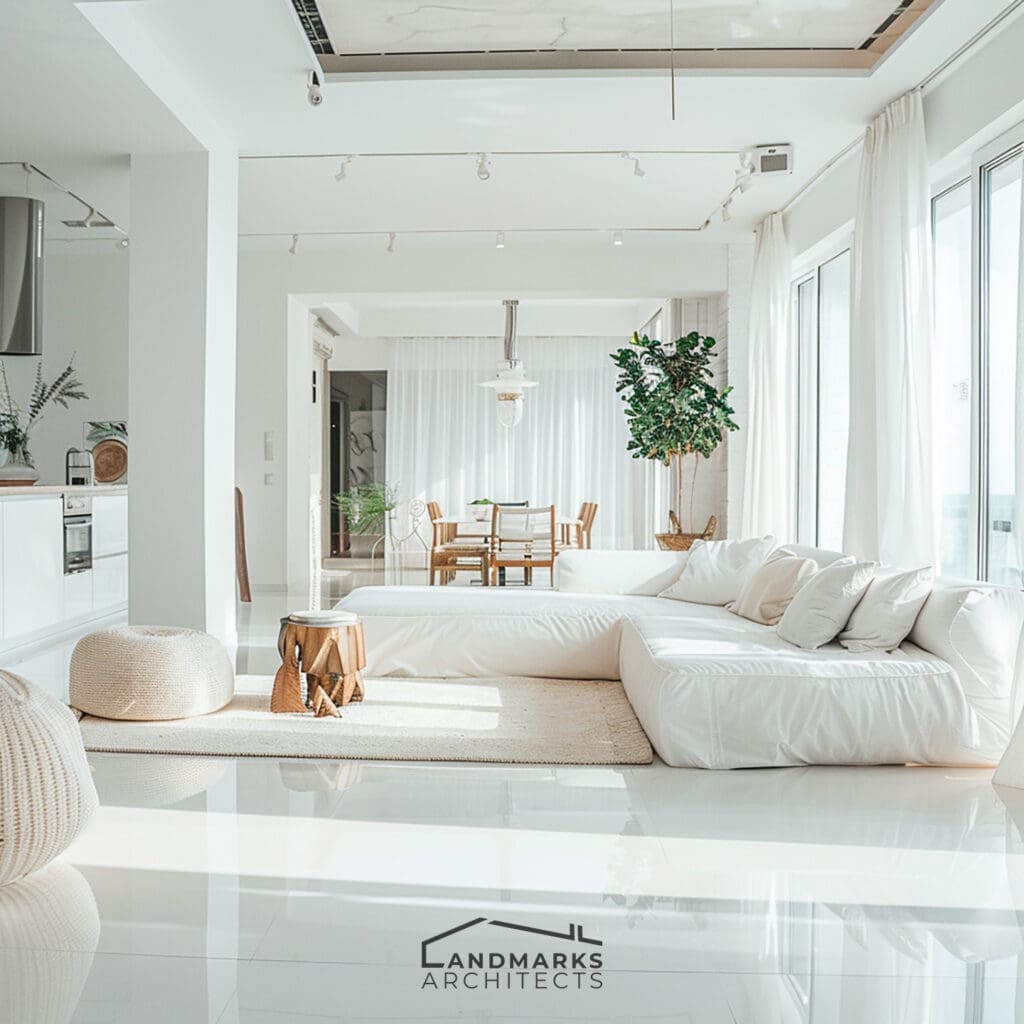
For spaces requiring a more defined separation, interior columns shine as room dividers. These decorative columns not only enhance privacy but also contribute to the overall design aesthetic.
3. Architectural Focal Points
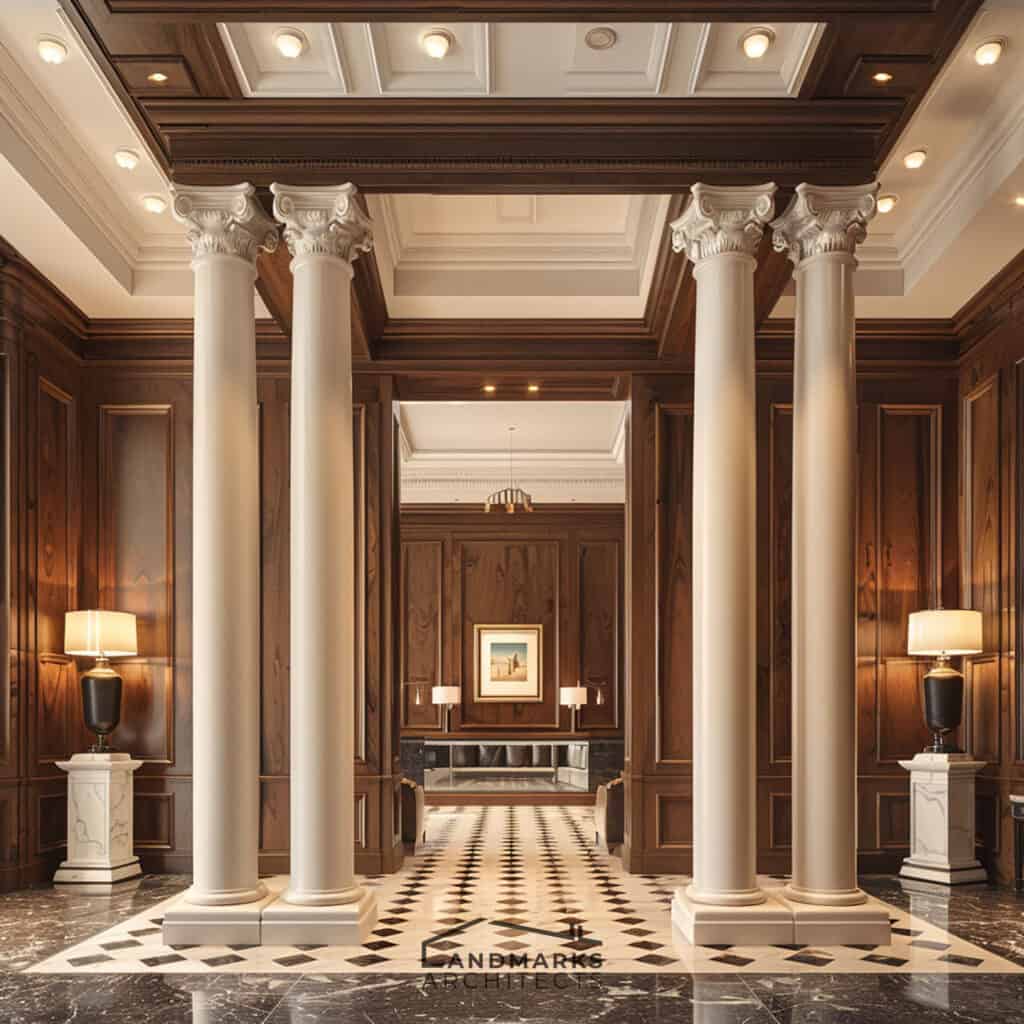
Interior columns play a pivotal role in crafting grand entrances. Decorative interior columns, adorned with molding and paneling, frame entryways, setting the tone for the entire space. These columns act as architectural statements, welcoming inhabitants and guests with a touch of elegance.

Hallways, often overlooked, can become design focal points with the incorporation of internal columns. Whether using traditional wooden columns or embracing a more modern square column design, this architectural addition transforms transitional spaces into elegant passageways.
4. Enhancing Columns
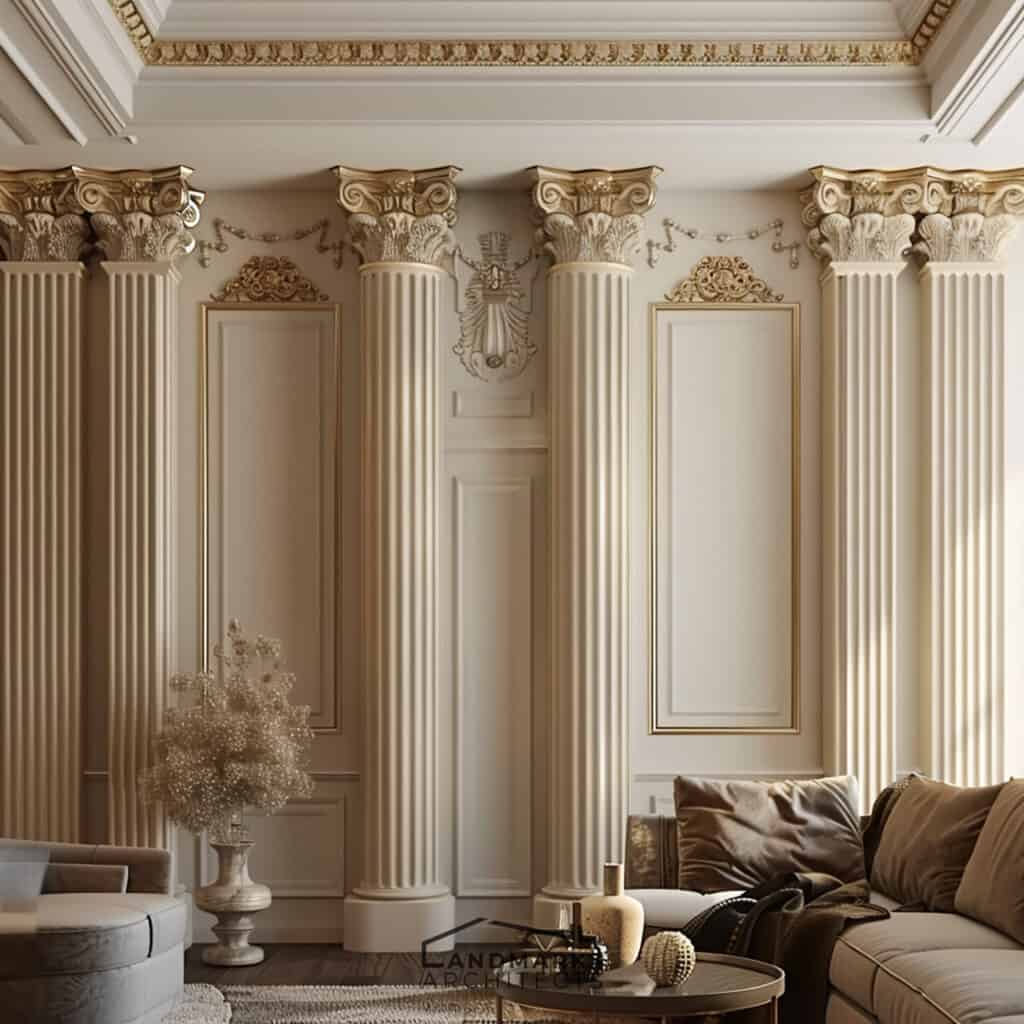
Decorative interior columns come to life with intricate molding and paneling. The addition of these details elevates the visual appeal of columns, turning them into ornate features within the space. This detailed approach aligns with interior columns design ideas that prioritize the integration of decorative elements.

Elevate the charm of an interior column by incorporating intricate column headers. These ornate details serve as crowning elements, enhancing the column’s visual appeal and sophistication. Whether featuring classical motifs or modern patterns, these additions transform the column into a stylish focal point, increasing its overall attractiveness and contributing to a refined and elegant interior space.
Exploring surface treatments for interior columns opens up a domain of possibilities in interior design. Whether opting for sleek and polished square columns or those adorned with textured surfaces, the creative spectrum is vast. These surface treatments become integral to the overall design narrative, transforming each column into a distinctive piece of art.
5. Highlighting the Columns

Strategic lighting transforms internal columns into visual focal points. Be it the recessed lighting accentuating the lines of square columns or the uplighting drawing attention to the stature of decorative wooden columns, illumination introduces a layer of sophistication to these key architectural elements.
The transformative influence of light on detailed columns, particularly those with textured surfaces like wooden columns, is a spectacle in interior design. In essence, light becomes a sculptor, carving out a visual symphony that elevates the character of these textured columns, turning them into focal points.

Innovative lighting design involves embedding fixtures within column structures. This method not only serves the practical purpose of providing functional illumination but also enriches the aesthetic appeal of the column. The result is a harmonious fusion of light and design, showcasing the versatility and beauty of columns in an illuminated setting.
6. Transforming Interior Columns

Internal columns can serve dual purposes by incorporating functional elements such as shelving or niche spaces. This design strategy maximizes space utilization while adding a layer of practicality to the columns.
For a streamlined look, consider embedding furniture elements within columns. From built-in bookshelves to hidden storage compartments, this approach marries form and function, creating a cohesive and purposeful design.

Use a column to pivot to add extra furniture or turn it into an ice station or minibar. The arrangement represents the separation between spaces and highlights an additional section of the room for display or breakfast. Show some of the best ways of creating breakfast spaces in your home.
7. Display Art at Home

Treat the columns like walls and display all of your favorite art for your guests to enjoy. Paint white and create a blank canvas for your home, showing all of your favorite photos and prints.
8. Design Styles

Achieving a harmonious interior involves balancing different design eras. Internal columns provide the perfect canvas for a fusion of traditional and modern styles. Combining elements such as decorative columns with contemporary finishes creates a visually stunning and eclectic aesthetic.
9. Visual Continuity
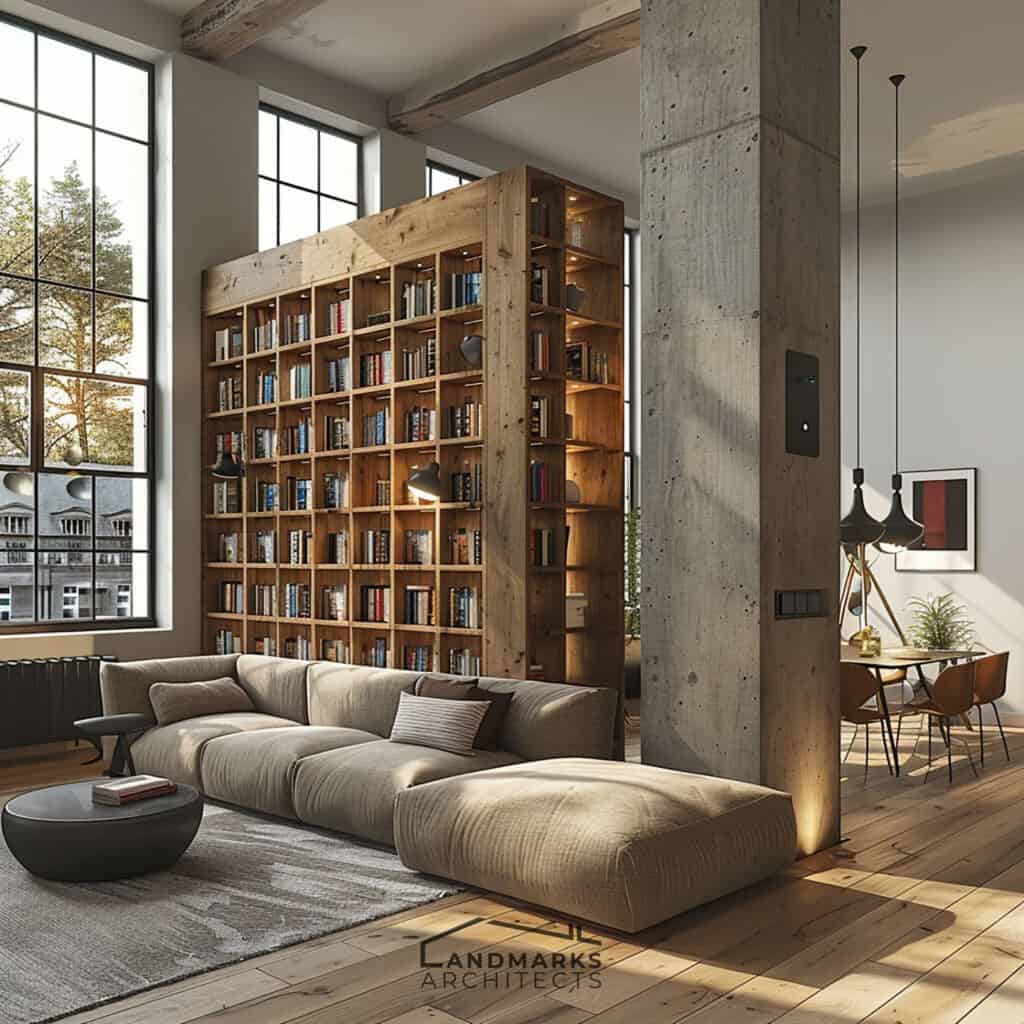

Maintaining visual continuity within a space is essential for a cohesive design. Internal columns, when thoughtfully integrated, contribute to the overall visual flow. Consistent design elements, whether in the form of square columns or decorative features, ensure a harmonious environment.
Concrete and wooden columns play distinctive roles in modern interior design, contributing to the aesthetic and structural aspects of architectural spaces.
See also: Wooden Interior Design

Coordinate internal columns with other design elements to achieve a seamless integration. Whether aligning with color schemes, materials, or architectural motifs, this approach enhances the overall aesthetic unity within the space.
10. Indoor and Outdoor Spaces
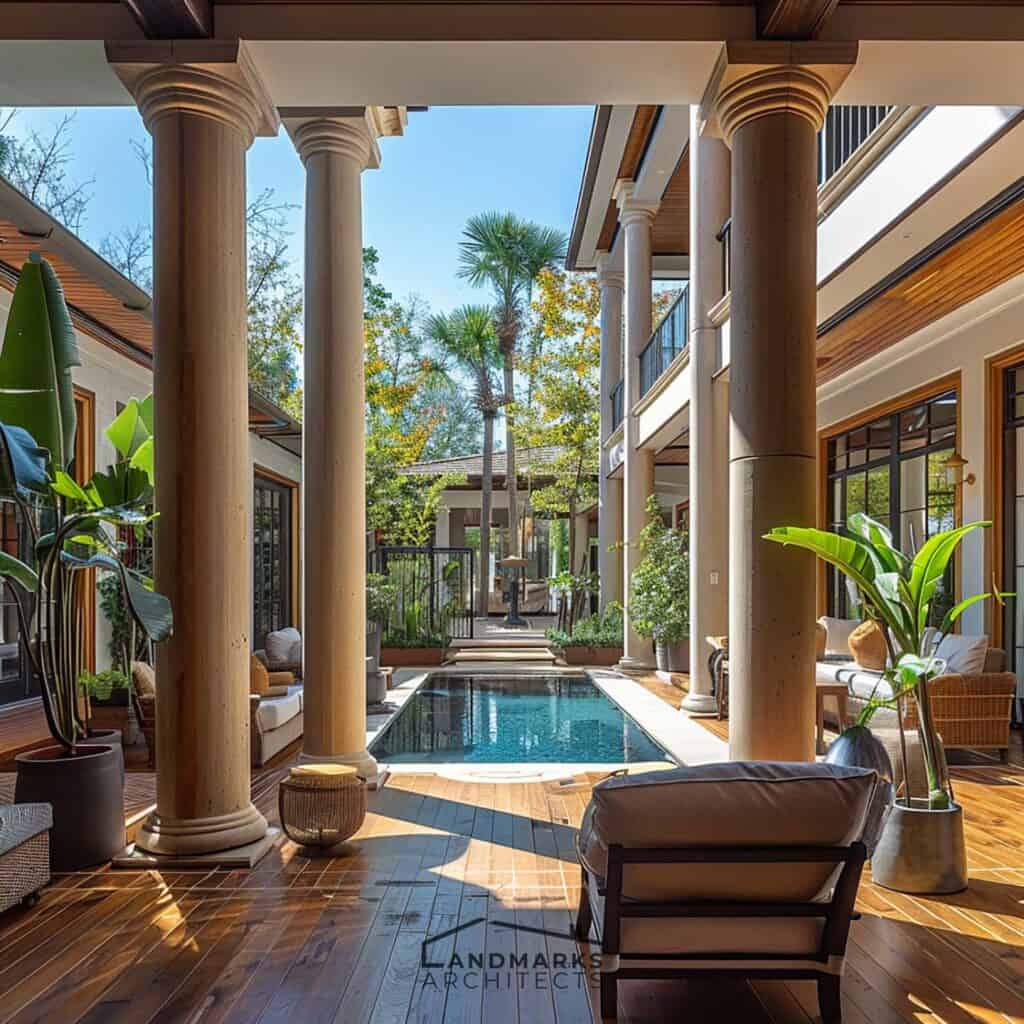
For homes with courtyards or outdoor areas, internal columns can bridge the gap between indoor and outdoor living. Courtyard columns, whether decorative or functional, create a visual connection, blurring the boundaries between interior and exterior spaces.

Columns strategically placed near windows can frame outdoor views, bringing the beauty of nature into the interior. This design technique enhances the overall aesthetic while promoting a sense of balance between the built environment and the natural world.
Interior Columns Design Ideas: A Recap

In conclusion, As one of the crucial architectural elements, internal columns have multifaceted applications in design. From their structural support functions to their role as decorative focal points, columns significantly contribute to the overall ambiance of a space. By carefully considering design elements, surface treatments, and lighting integration, internal columns become versatile assets in interior design.
Embrace the unique character inherent in each column, allowing them to transcend their structural roles and evolve into genuine works of art within your meticulously designed spaces.









